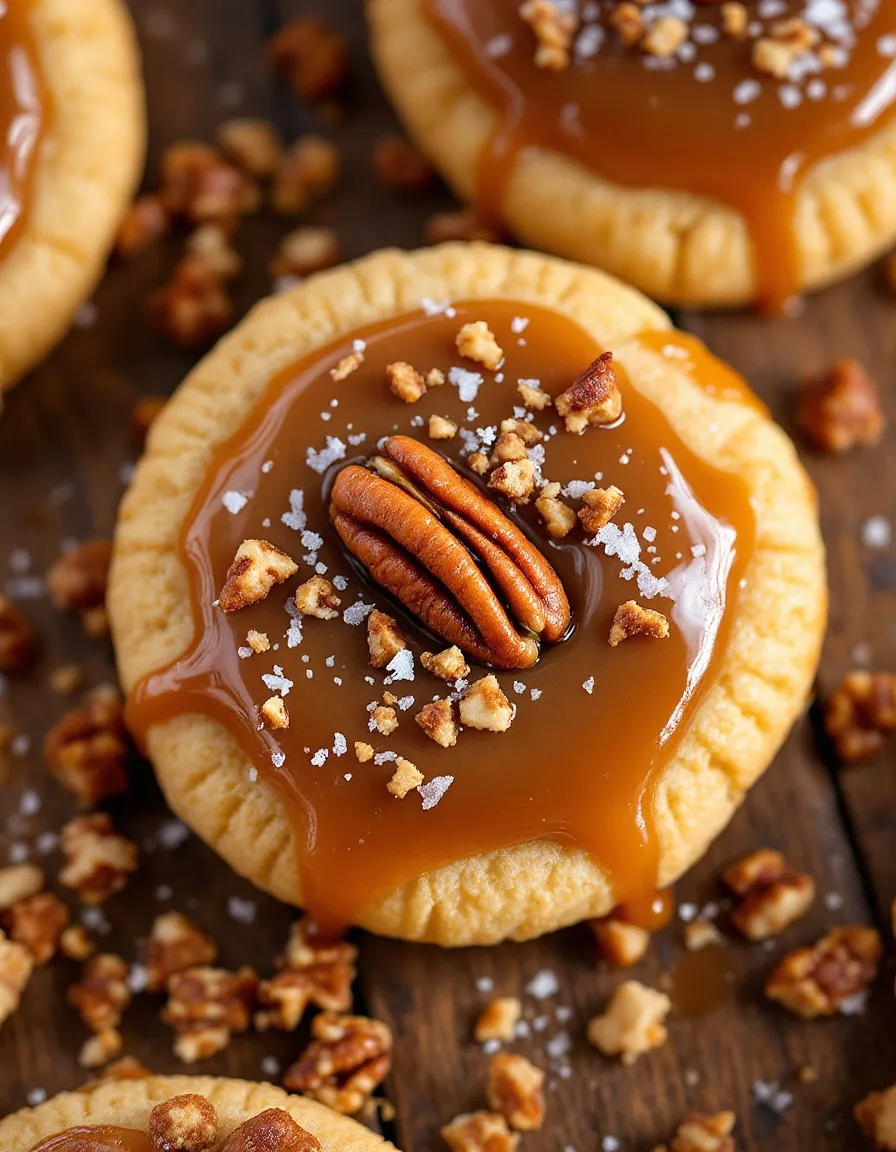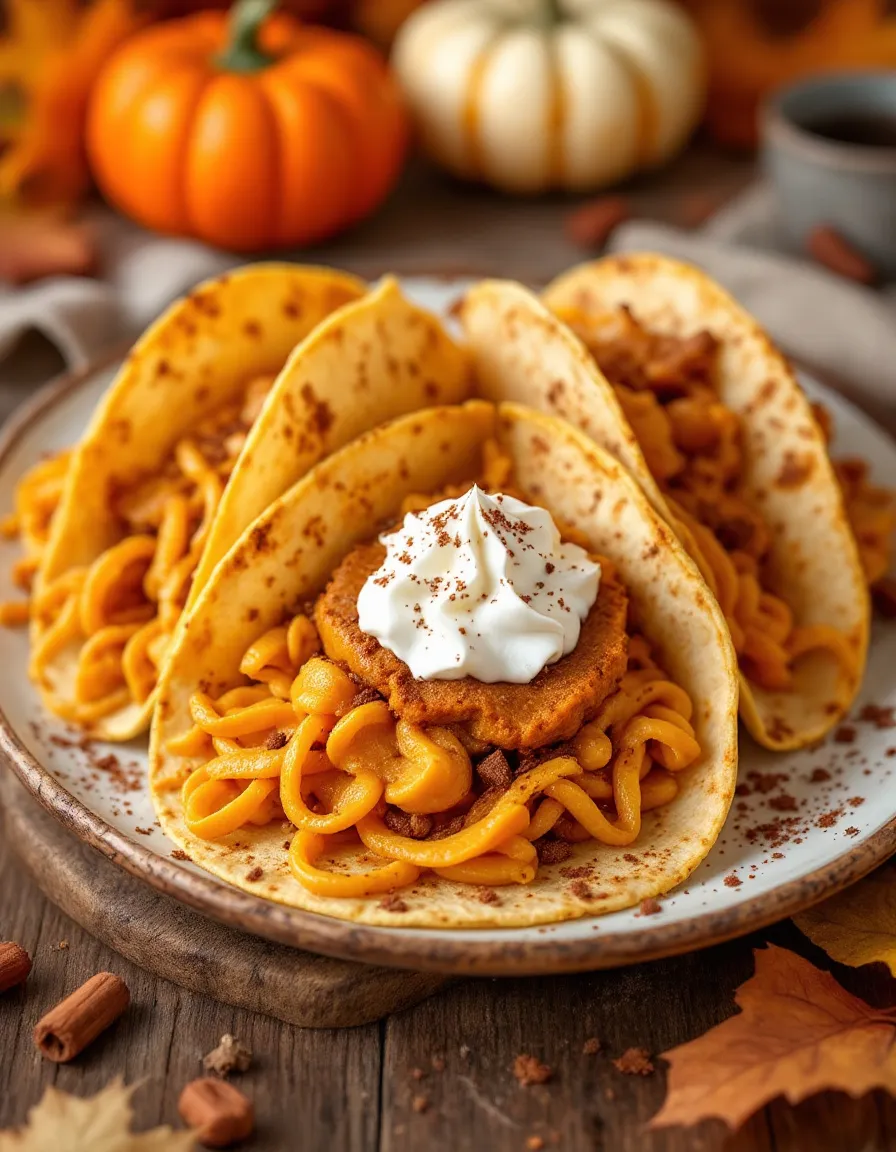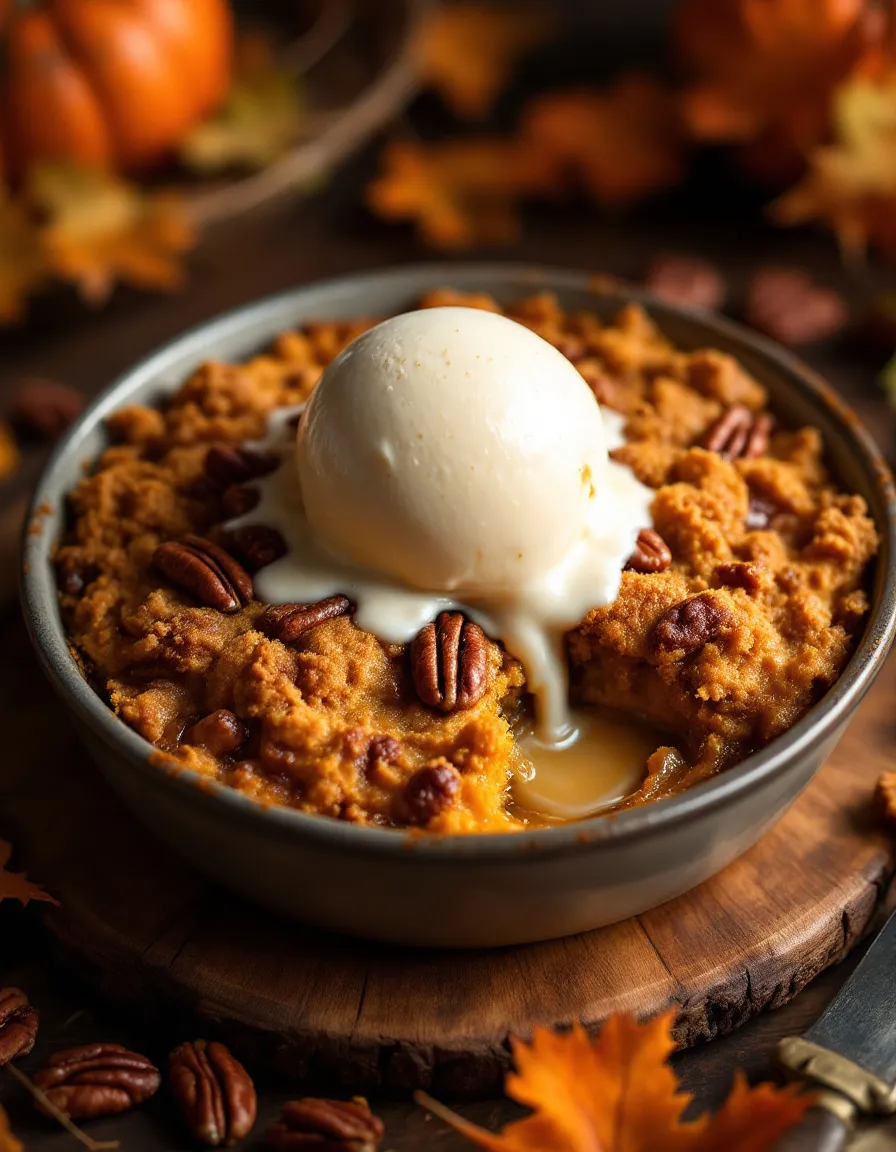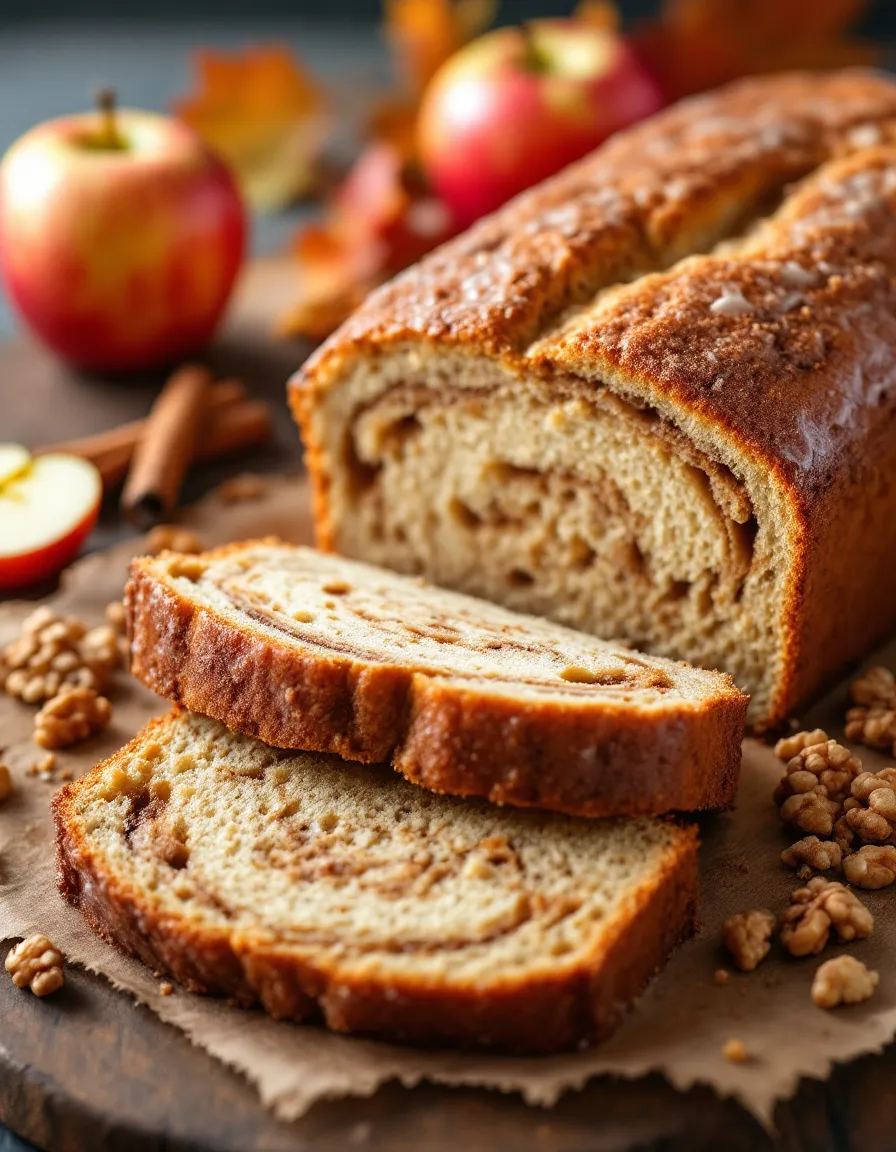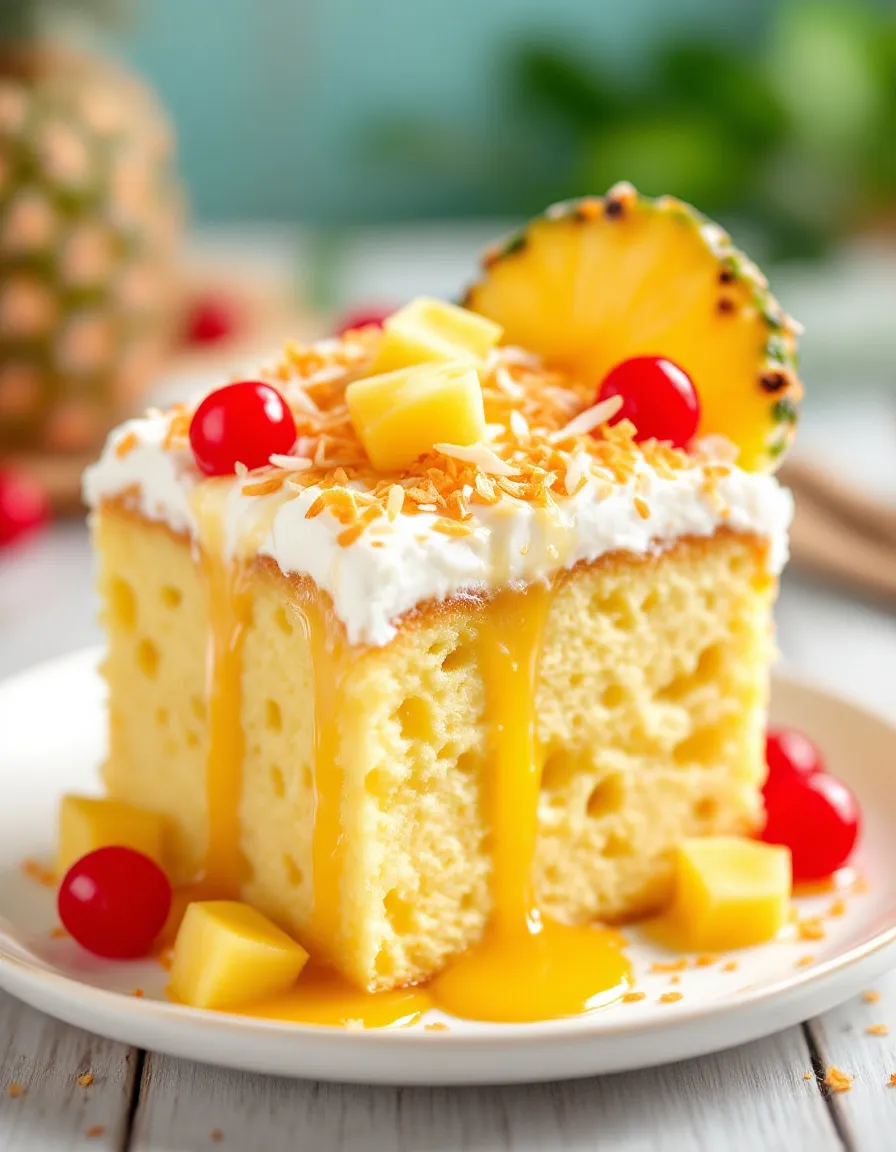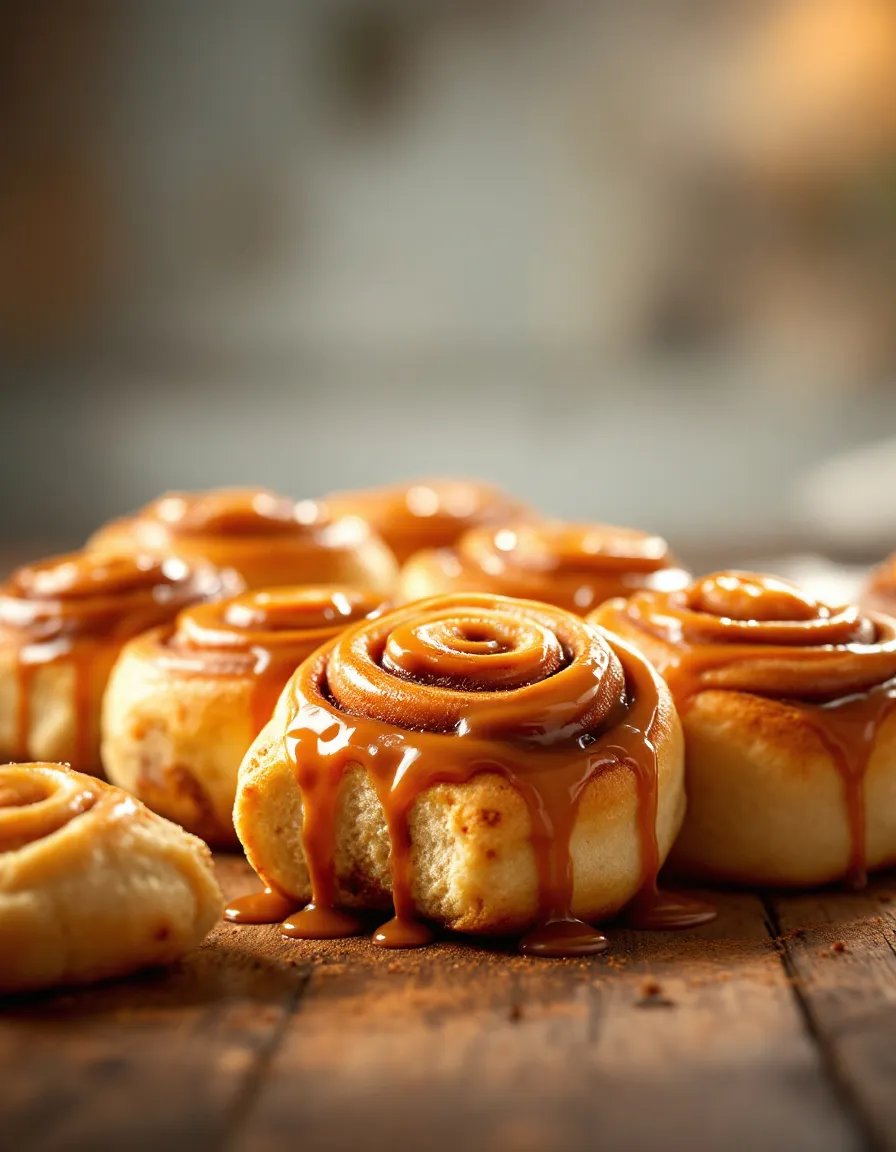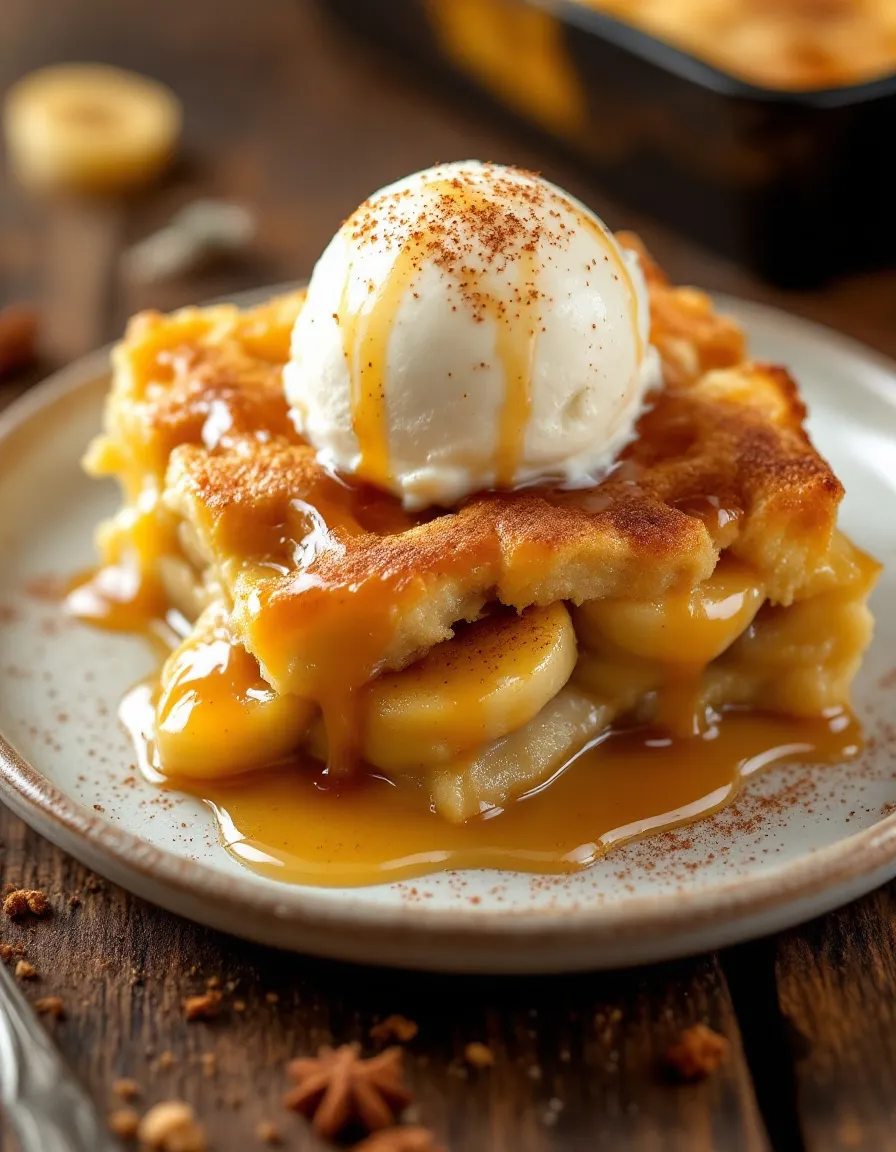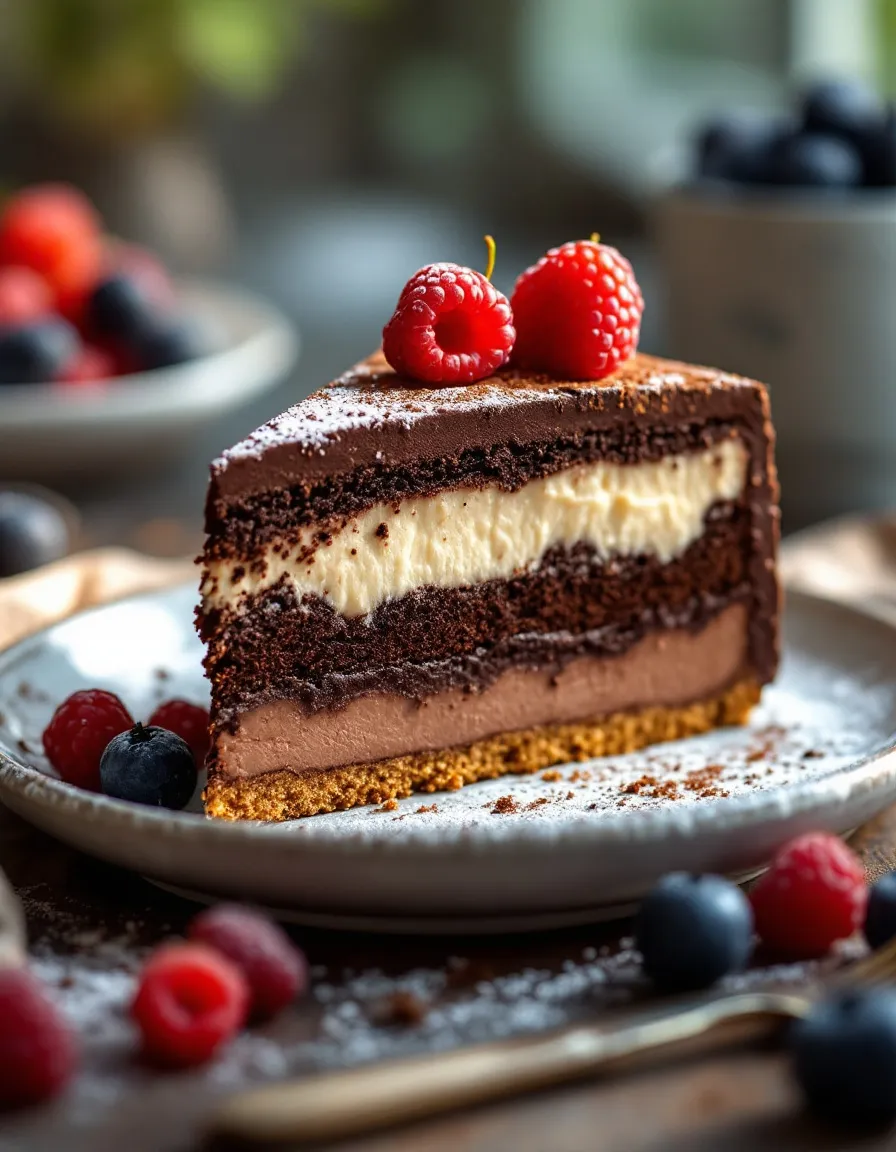Crumbl Pecan Pie Cookies: A Delectable Twist on a Classic Treat
Crumbl Pecan Pie Cookies marry two beloved desserts into one delightful treat that’s sure to be a hit at any gathering. Imagine the warm, nutty flavor of pecan pie, combined with the sweet, soft texture of sugar cookies. Each bite is a crunchy, yet tender treat bursting with sweetness, reminiscent of fall celebrations and family gatherings. This recipe not only pleases the palate but also brings warmth and coziness to your kitchen, wrapping you in nostalgia with each mouthful.
The cookies are perfectly complemented by a drizzle of buttery caramel and a sprinkle of flaky sea salt, delivering a symphony of flavors and textures. The contrast between the crunchy pecans and soft sugar cookie base creates a delicious mouthfeel that will leave you craving more. Whether served at a holiday party or enjoyed as an afternoon treat, these cookies elevate any occasion with their decadent taste and charming appearance.
Quick Recipe Highlights
- Flavor Profile: These cookies bring a delightful blend of rich, buttery sweetness and nutty depth, echoing the flavors of traditional pecan pie.
- Texture: Expect a soft, chewy center with a crispy edge, crowned with crunchy pecans for an irresistible bite.
- Aroma: The inviting scent of brown sugar, vanilla, and toasted nuts fills your kitchen, creating a warm, festive atmosphere.
- Visual Appeal: Golden brown cookies adorned with glistening caramel and chopped pecans make for an appealing presentation.
- Skill Level Needed: This recipe requires basic baking skills and attention to detail, making it attainable for home bakers.
- Special Equipment: Standard baking tools like mixing bowls, a mixer, and an oven are essential for perfecting this cookie recipe.
Recipe Overview
- Difficulty Level: These Crumbl Pecan Pie Cookies are categorized as moderate due to their multi-step preparation, but the process is straightforward and rewarding.
- Category: Ideal for dessert or snacks, they are a perfect addition to any cookie platter alongside other sweet treats.
- Cuisine: This recipe is inspired by Southern American traditions, where pecan pie is a beloved staple often enjoyed during festive seasons.
- Cost: Ingredients are relatively affordable, costing around $10 to $15 for a batch yielding two dozen cookies.
- Season: Fall is the best season to enjoy these cookies, aligning with peak pecan harvests and festive gatherings.
- Occasion: Perfect for Thanksgiving, Christmas, or any family get-together, these cookies are sure to impress guests.
Why You’ll Love This Recipe
The distinct taste and texture of Crumbl Pecan Pie Cookies create a delightful experience for your taste buds. With every bite, you enjoy the luscious blend of sweet sugar cookie and savory pecans. This combination not only satisfies sweet cravings but also brings the comfort of a classic pecan pie in a cookie form. The drizzle of caramel adds a luscious finish that rounds out the flavor profile, making these cookies an irresistible treat.
Convenience is another factor that makes this recipe stand out. Unlike traditional pecan pie, which requires a lengthy baking time and process, these cookies come together quickly and easily. Preparation is simple, with no pie crust rolling or lengthy cooling times involved. You’ll have warm cookies to enjoy in just 35 minutes, making them an excellent choice for spontaneous cravings or last-minute gatherings.
From a nutritional perspective, pecans are packed with healthy fats and protein, providing a more balanced treat compared to other sugary options. Incorporating nuts into your baking not only satisfies hunger but also adds valuable nutrients. While these cookies are still a dessert, the presence of nuts gives them a nutritional edge.
For social occasions, Crumbl Pecan Pie Cookies serve as a fantastic conversation starter at gatherings. Their unique combination of flavors draws attention, inviting guests to indulge and share their thoughts. Baking these cookies can also become a fun group activity, allowing friends and family to bond over mixing, shaping, and tasting.
Lastly, the cost-effectiveness of this recipe makes it accessible to everyone. With minimal ingredients that are usually staples in your pantry, you won’t need to break the bank to treat yourself or your loved ones to something special. These cookies provide high satisfaction for relatively low investment, making them a go-to dessert option.
Historical Background and Cultural Significance
The origin of pecan pie dates back to the 19th century in the Southern United States, where pecans were abundant. Initially, the pie was made by early settlers who took advantage of the local nut trees. Over the years, it evolved into a favorite during holiday feasts, symbolizing warmth and family togetherness.
In Southern culture, pecan pie holds a special place, often seen as a staple dessert at holidays and gatherings. Its sweet, nutty flavor evokes comfort and nostalgia, reminding many of cherished family traditions. The cookie version amplifies this sentiment, making the experience of enjoying pecan treats more accessible to those who may not have the time or resources to bake a full pie.
The adaptation of the traditional pie into cookies showcases the evolution of desserts, emphasizing creativity in the kitchen. As home bakers seek to satisfy cravings with less time and effort, recipes like the Crumbl Pecan Pie Cookies flourish, allowing the enjoyment of rich flavors in a convenient format.
Regional variations exist, with some incorporating chocolate or different nuts, adapting the same basic principles of balance and richness. These variations emphasize the versatility of the pecan and demonstrate how it can be showcased in various forms beyond just pie.
Ingredient Deep Dive
Pecans: Pecans are not just a delicious addition; they are also rich in healthy fats, protein, and antioxidants. They provide heart-healthy monounsaturated fats, which can help lower cholesterol levels. When selecting pecans, choose fresh, raw nuts for the best flavor and nutritional benefits. Store them in an airtight container in a cool, dark place to maintain freshness and avoid rancidity. If you’re in need of substitutions, walnuts or almonds can be used, although they will impart a different flavor profile.
Baking Powder: This leavening agent is crucial for achieving the chewy, soft texture of the cookies. It helps the cookies rise, giving them that desirable lift and mouthfeel. When selecting baking powder, ensure it’s fresh; an expiration date can greatly impact the rise of your cookies. Store it in a dry area and consider substituting it with baking soda if necessary, adjusting quantities accordingly.
Brown Sugar: The use of brown sugar adds moisture and a deep, caramel flavor, enhancing the overall sweetness of the cookies. Light brown sugar works well, but dark brown sugar can intensify the flavor. When selecting brown sugar, look for finely packed options. Store it in an airtight container to prevent hardening, and if you run out, white sugar mixed with a bit of molasses can serve as a quick substitute.
Butter: Butter provides richness and moisture, crucial for a soft and chewy cookie. It also contributes to the cookies’ flavor. Using unsalted butter allows for better control of the saltiness. Keep butter stored in the refrigerator; you can even freeze it for longer storage. If you need dairy-free alternatives, coconut oil or vegan butter can be effective substitutes, although they may alter the taste slightly.
Common Mistakes to Avoid
- Not measuring ingredients accurately can result in a poorly textured cookie. Use a kitchen scale or proper measuring cups for precision.
- Overmixing the dough, which can lead to tough cookies. Mix only until the ingredients are combined.
- Using cold butter instead of softened butter affects the dough consistency, leading to cookies that don’t spread properly.
- Baking at the wrong temperature can cause cookies to bake unevenly. Always preheat the oven for best results.
- Not chilling the dough can result in cookies spreading too much, impacting their texture. A quick chill can enhance flavor and shape.
- Skimping on the pecans often leads to a less flavorful cookie. Use a generous amount for a nutty experience.
- Ignoring the baking time can result in burnt edges or uncooked centers. Keep a close eye on cookies in the oven.
- Not letting the cookies cool on the baking sheet can lead to breakage. Allowing them to set before transferring ensures they hold shape.
- Using outdated ingredients, especially baking powder, can result in poor rising. Always check freshness before use.
- Failing to line the baking sheet with parchment paper can lead to sticking and uneven baking. Always line or grease the trays well.
Essential Techniques
Mixing Ingredients: Proper mixing ensures that all ingredients are adequately combined without overworking the dough. To master this, start by mixing the butter and sugars until light and fluffy before adding other wet ingredients. Combine dry ingredients separately to minimize clumping. Visual cues for success include a smooth, uniform mixture with no lumps.
Chilling the Dough: Chilling helps solidify the fats, leading to a softer and more flavorful cookie. To master this technique, shape the dough into a log or disks and wrap in plastic wrap, refrigerating for at least 30 minutes. A well-chilled dough will yield cookies that spread perfectly while baking.
Pro Tips for Perfect Crumbl Pecan Pie Cookies
1. Use high-quality, fresh pecans for the best flavor and crunch, preferably toasting them lightly to enhance their nuttiness.
2. Allow precise cooling times; let cookies sit on the baking sheet for a few minutes before transferring them to a wire rack.
3. Double the recipe for larger gatherings, and freeze a portion for future cravings—baked cookies freeze well.
4. For added flavor, experiment with different types of sugars, such as using part light brown and part dark brown sugar.
5. Don’t skip the salt; a pinch enhances the sweetness and balances flavors beautifully.
6. If you want an extra touch, drizzle melted chocolate over the cookies once cool for a decadent twist.
Variations and Adaptations
For a regional twist, try adding chocolate chips for a chocolate-pecan pairing reminiscent of turtle desserts. Seasonal adaptations can include adding cinnamon or nutmeg during the fall to enhance that warm flavor profile. For those who follow specific dietary habits, consider gluten-free flour blends or sugar-free alternatives to cater to dietary needs without sacrificing flavor. If you want a crunchier texture, experiment with toasting the flour slightly before use or adding crushed cookies or cereal to the mixture.
Serving and Presentation Guide
To present your Crumbl Pecan Pie Cookies beautifully, stack them on a decorative cake stand or serve them on a rustic wooden board. A drizzle of caramel sauce or melted chocolate can provide an eye-catching garnish. Adding fresh pecans around the cookies not only enhances the aesthetic but also invites your guests to indulges. For an elegant touch, serve with a scoop of vanilla ice cream alongside the warm cookies, providing a delightful contrast in temperature and taste.
Wine and Beverage Pairing
These cookies pair wonderfully with a glass of dessert wine, such as a sweet Riesling or a rich port wine, where the sweetness complements the pecan flavors. For non-alcoholic options, consider serving apple cider, which echoes the warm spices of the cookie. To enhance flavors during special occasions, a well-brewed cup of coffee or a creamy cup of hot cocoa can create a perfect afternoon pairing.
Storage and Shelf Life
Store Crumbl Pecan Pie Cookies in an airtight container at room temperature for up to a week. For longer freshness, consider freezing them; place the cookies in a single layer on a baking sheet, freeze until solid, then transfer to a zip-top bag for up to three months. Always check for any signs of spoilage, such as dryness or off-odors, before consuming. When reheating, simply warm them in the microwave for a few seconds to restore softness.
Make Ahead Strategies
To streamline the process, prepare the cookie dough in advance and chill it, allowing the flavors to meld overnight. This not only enhances flavor but also makes baking a quick process on the day of serving. Alternatively, you can bake the cookies and freeze them to enjoy later, ensuring you always have a treat on hand. If you intend to serve the cookies later, hold off on adding any frosting or toppings until just before serving to maintain texture and freshness.
Scaling Instructions
If you’d like to halve the recipe, keep the ingredient proportions consistent while breaking down the amounts. For doubling or tripling, ensure you have sufficient baking sheets and oven space, adjusting the baking time if necessary as multiple sheets can impact cooking efficiency. Pay attention to mixing times, as larger batches may need more time for thorough incorporation of ingredients. Adjust storage materials based on batch size, ensuring cookies remain fresh and protected.
Nutritional Deep Dive
Crumbl Pecan Pie Cookies provide a satisfying macro ratio, making them a balanced choice for a treat. Each cookie includes healthy fats from pecans, a source of protein, and carbohydrates primarily from sugar and flour, catering to energy needs. They also supply vitamins and minerals present in nuts, such as Vitamin E and magnesium, offering additional health benefits beyond mere indulgence. Practicing portion control can further enhance their role as a guilt-free dessert option in your diet.
Dietary Adaptations
To make these cookies gluten-free, substitute traditional flour with a gluten-free blend, keeping ratios in mind to maintain texture. For a dairy-free option, use vegan butter and dairy-free chocolate chips if adding chips. Adapting this recipe for those following a low-carb or keto diet involves using almond flour and a sugar substitute, ensuring necessary sweetness without unnecessary carbs. If you have specific dietary restrictions, explore these substitutions to make the cookies accessible to all.
Troubleshooting Guide
For texture issues, adjusting the mixing process can often lead to better results—overmixing can yield tough cookies. If your cookies spread too much, check that your butter is at room temperature, not melted. Flavor balance can be tweaked by adjusting the sugar content or adding a pinch of salt if the cookies taste overly sweet. Equipment challenges, such as uneven oven temperatures, can be resolved by rotating baking sheets mid-bake. Explore each aspect to perfect your baking technique.
Recipe Success Stories
Community feedback has been overwhelmingly positive, with many praising the delightful combination of flavors and textures. Some readers have experimented with nut toppings and fillings, successfully adapting the recipe to suit their tastes and preferences. Photographic submissions showcase beautifully styled cookies, inspiring others to recreate the recipe with their artistic spin. Sharing personal stories about making these cookies has sparked recipe swaps, building a sense of community among bakers exploring variations together.
Frequently Asked Questions
How do I keep cookies from spreading? If your dough spreads too much, chill it for 30 minutes before baking. The solid fats will help maintain their shape.
Can I freeze the dough? Absolutely! You can freeze the dough for up to three months, allowing you to bake fresh cookies when cravings hit.
What’s the best way to store these cookies? Keep them in an airtight container at room temperature, or freeze them for longer freshness.
Are these cookies suitable for gift giving? Yes! They make a thoughtful and delicious gift, especially when beautifully packaged in a decorative tin.
What variations can I try? Feel free to add chocolate chips, change up the nuts, or add spices like cinnamon for fun twists on the original recipe.
How can I adjust the sweetness? You can reduce the sugar slightly to suit your taste or opt for a sugar substitute when baking.
What other nuts can I use? Besides walnuts, almonds or hazelnuts can substitute, but they will create a distinct flavor variation.
Can these cookies be made vegan? Yes! Using vegan butter and a flax egg is an excellent substitute to make these cookies vegan.
How long do they stay fresh? These cookies remain fresh for about one week at room temperature, or up to three months if frozen.
Additional Resources
Explore related recipes featuring pecans or cookies to expand your sweet collection. Technique guides related to cookie baking can be helpful for mastering essential skills. Gather ingredient information to understand the best practices for selection and storage. If equipment is a concern, consider recommendations for baking sheets or mixers that yield the best results. Keep an eye out for seasonal variations in ingredients that can inspire creativity in your baking endeavors.
Join the Conversation
Engage with us by sharing your own experiences with these Crumbl Pecan Pie Cookies on social media. Upload your photographs and recipe reviews to inspire others in your cooking journey. Join our community discussion by exchanging tips on variations you’ve found successful. We love hearing personal adaptations and suggestions, enhancing this culinary adventure together!
The Recipe
Crumbl Pecan Pie Cookies
Serves: 24 cookies
Prep Time: 20 mins
Cook Time: 15 mins
Total Time: 35 mins
Kitchen Equipment Needed
- Baking sheet
- Parchment paper
- Mixing bowls
- Electric mixer
- Measuring cups and spoons
- Spatula
Ingredients
- 1 cup unsalted butter, softened
- 1 cup brown sugar, packed
- 1/2 cup granulated sugar
- 2 eggs
- 2 teaspoons vanilla extract
- 3 cups all-purpose flour
- 1 teaspoon baking powder
- 1/2 teaspoon salt
- 1 cup pecans, chopped
- 1 cup caramel sauce for drizzling
- Flaky sea salt for garnish
Directions
- Preheat your oven to 350°F (175°C) and line a baking sheet with parchment paper.
- In a large mixing bowl, cream together the softened butter, brown sugar, and granulated sugar until light and fluffy.
- Add in eggs and vanilla, mixing until combined.
- In another bowl, whisk together flour, baking powder, and salt.
- Gradually add the dry ingredients to the wet mixture, folding until just combined.
- Stir in the chopped pecans gently.
- Drop tablespoon-sized portions of dough onto the prepared baking sheet, spacing them a few inches apart.
- Bake for approximately 10-12 minutes or until the edges are lightly golden.
- Remove from the oven, allow them to cool on the baking sheet for a few minutes before transferring to a wire rack.
- Once cooled, drizzle with caramel sauce and sprinkle with flaky sea salt.
Recipe Notes
- For a deeper flavor, consider toasting the pecans before adding them to the dough.
- Feel free to adjust the sweetness by reducing both sugars slightly if preferred.
- The dough can be prepared a day in advance and stored in the refrigerator for enhanced flavor.
- These cookies can be frozen; just follow the storage guidelines for best results.
